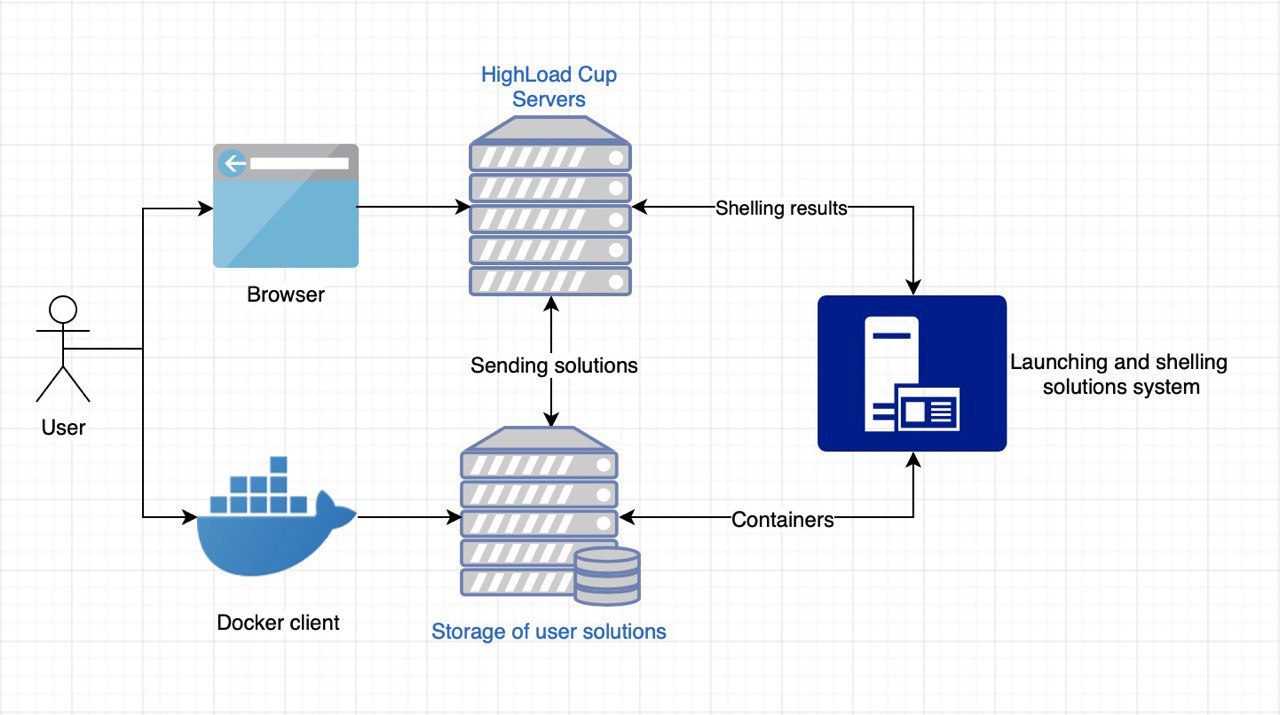There are two types of solution verification: rapid shelling and rating verification.
Express shelling
Available an unlimited number of times per day, and is approximately 1/50 of the rating verification of the solution. This check is a way to find out if the solution is ready for a rating check. It is assumed that the rapid shelling takes no more than 7 minutes.
Rating check
According to the results of the rating check, you have the opportunity to occupy places in the leaderboard of the current championship. It is conducted in this way:
Before the shelling, 10 minutes of waiting are planned so that the participant’s decision can analyze the transmitted test data and prepare for the shelling.
180 seconds the first phase lasts with a linear profile from 0 to 150 RPS.
Will be released: integral (150 / 180x) dx from 0 to 180 = 13500 requests
300 seconds second phase lasts with a linear profile from 0 to 300 RPS
Will be released: integral (300 / 300x) dx from 0 to 300 = 45000 requests
60 seconds the third phase lasts with a linear profile from 0 to 1000 RPS.
Will be released: integral (1000 / 60x) dx from 0 to 60 = 30000 requests
Validation of responses ~ 2 minutes.
Analysis of the results on the site ~ 2 minutes.
Total shelling lasts about 25 minutes (in the absence of a queue)
Total queries in the shelling: 88500.

